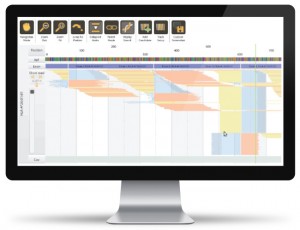After “covering” the IgNobel Prizes, I feel it’s my duty to write about the “real thing” as well. So let’s take a look at the scientific Nobel Prize winners of 2013!
Month: October 2013
Top HLA labs report large-scale NGS adaptation at Registries 2013 conference
Posted by Attila Berces
Cyprus was an ideal site for a conference on marrow donor registries since this country has the highest proportion of its population HLA typed and registered as donors. The importance of this registry was already apparent on the flight to the conference since Cyprus Airways in-flight magazine featured the history and mission of the Karaiskakio Foundation, which operates the Cyprus Bone Marrow Donor Registry. As is the case with several other registries, it was started with a young boy’s fight with leukemia that mobilized family, friends and the general public after becoming aware how difficult it was to find a match. Today, Cypriotes reached high level of awareness of the importance of becoming a registered marrow donor and developed a financially sustainable model of operations for their registry. It is a significant achievement since only the largest registries can sustain their operations from the fees received for facilitating transplants. Small and medium size registries lack the economy of scale and face the challenge of financial sustainability. HLA genetic diversity is at the root of many economic issues and this conference addressed these questions in their complexity. The conference included lectures on international donor exchange, economic analysis of the ideal registry size and quality, new technologies bringing down the cost of HLA typing, the pros and cons of on-line registration, and social media as a way for attracting donors.
Flashcard Fridays – Seeing the invisible
October is Blindness Awareness Month. (Don’t forget that World Sight Day is coming up next week!) Also, in a way, next generation sequencing (and sequencing, in general) is all about making invisible information “perceivable”, so I thought it would be a good idea to collect some articles about what “hidden knowledge” can NGS reveal about eyes and vision.
4 Summaries to Show You What Omixon Can Do
We decided to come up with 4 condensed summaries about the services Omixon Biocomputing can provide. You don’t have to be an expert to analyze NGS data, you just have to find the right tool for that. We hope you will find them useful!
Workflow Wednesdays – Coverage analysis 2. and other alignment statistics
As I promised last week, I’ll show you some command line based alignment analysis tools this week. As there are basically an endless number of methods for generating alignment statistics, feel free to share additional tips and tricks in the comment section!






